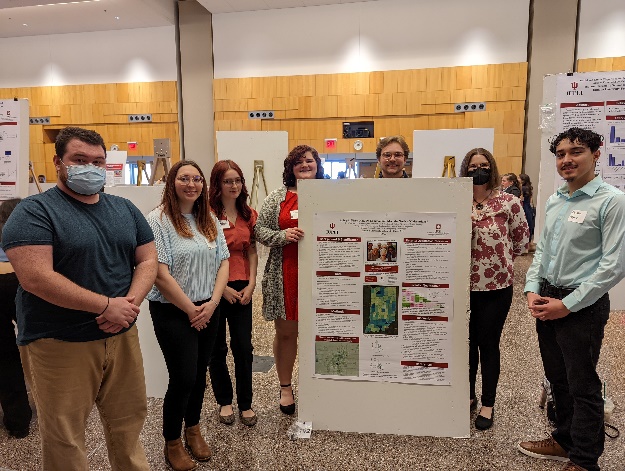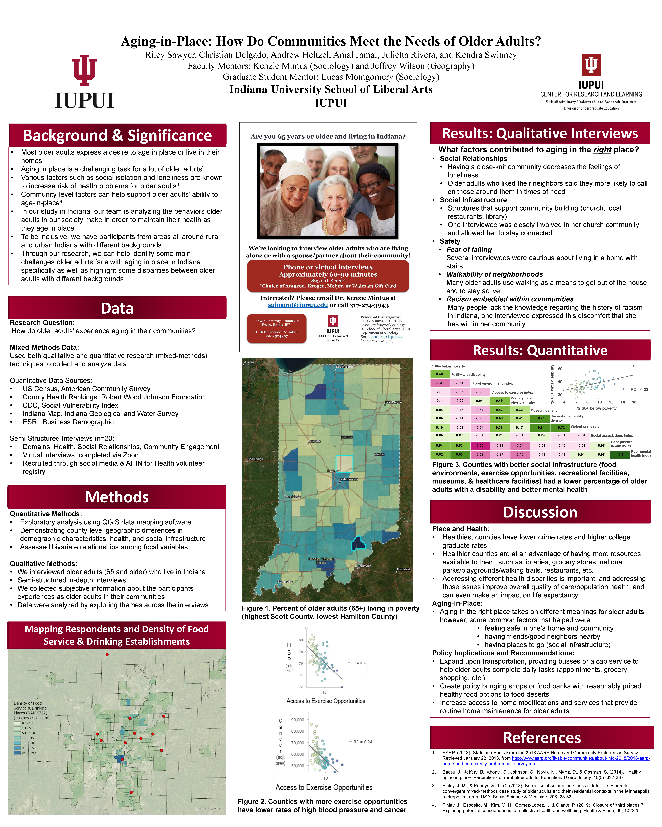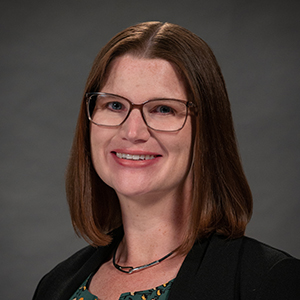Current Situation
The Indiana Aging in Place Study is a mixed-methods project examining the experiences of older Hoosiers who are living in the community. Our focus is to understand how older adults who are living alone or with partner maintain their health and social connections. Over fifty older adults were interviewed from March to August 2022. Graduate and undergraduate students spoke with interviewees from all over the state of Indiana. The research team has been working on preliminary analyses and continuing to gain new insights into how older adults experience and use resources within their communities Through Institute for Engaged Learning’s Multidisciplinary Undergraduate Research Institute (MURI) and Undergraduate Research Opportunity Program (UROP), seven undergraduate students have had the opportunity to collect and analyze data related to this project. Additionally, funding from the Indiana Arts and Humanities Institute supported the hiring of a graduate student project coordinator. Through these opportunities and resources at IUPUI, students made invaluable contributions to this research and gained important research-related skills. Student-related projects have been featured at the Engaged Learning Showcase and Summer Symposium.
The Project
- August 2022: Student Research Team Assembled
- August-May 2022: MURI students completed research activities and interviews
- April 2022: MURI students presented their findings
- May-August 2022: Interviews completed
- May 2022-April 2023: UROP student projects completed; preliminary analysis of qualitative interviews
- November 2022: Presentation at Gerontological Association of American (GSA)
- April 2023 and forward: Finalizing analyses, submitting papers for publication

Undergraduate Student Research Assistants present their findings
Humanitarian Impact
This research speaks to how communities can support older adults who are aging in place.
Results / Data
Qualitative Interviews Recap
What factors contributed to aging in the right place?
- Social Relationships
- Having a close-knit community decreases the feelings of loneliness
- Older adults who liked their neighbors said they more likely to call on those around them in times of need
- Social Infrastructure
- Structures that support community building (church, local restaurants, library)
- One interviewee was closely involved in her church community and allowed her to stay connected
- Safety
- Fear of falling - Several interviewees were cautious about living in a home with stairs
- Walkability of neighborhoods - Many older adults use walking as a means to get out of the house and to stay active
- Racism embedded within communities - Many people lack the knowledge regarding the history of racism in Indiana, one interviewee expressed this discomfort that she has within her community
For Discussion
Place and Health:
- Healthiest counties have lower crime rates and higher college graduate rates
- Healthier counties are at an advantage of having more resources available to them, such as libraries, grocery stores, national parks/playgrounds/walking trails, restaurants, etc.
- Addressing different health disparities is important, and addressing those issues improve overall quality of care/population health, and can even make an impact on life expectancy
Aging-in-Place:
- Aging in the right place takes on different meanings for older adults; however, some common factors that helped were:
- feeling safe in one’s home and community
- having friends/good neighbors nearby
- having places to go (social infrastructure)
Policy Implications and Recommendations:
- Expand upon transportation, providing busses or a cab service to help older adults complete daily tasks (appointments, grocery shopping, etc.)
- Create policy bringing shops or food banks with reasonably priced healthy food options to food deserts
- Increase access to home modifications and services that provide routine home maintenance for older adults





